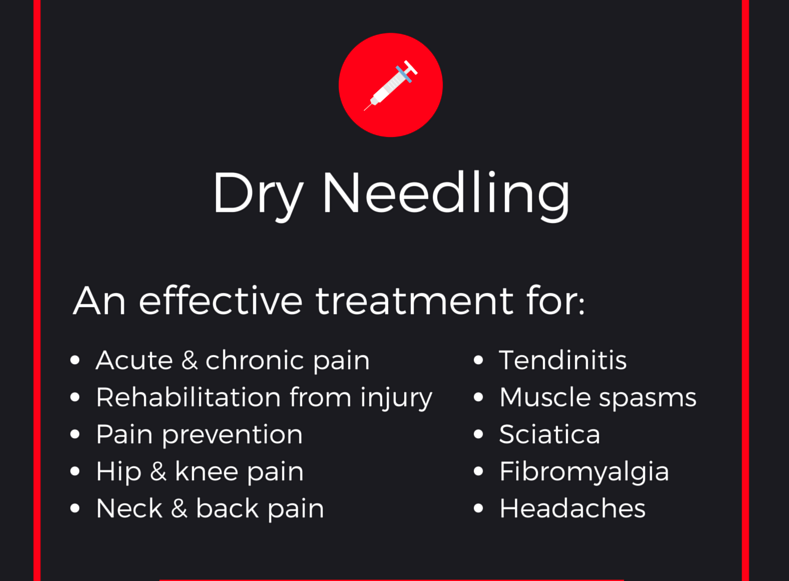Exploring the Research: Evidence-Based Benefits of Dry Needling
Benefits of Dry Needling

Exploring the Research: Evidence-Based Benefits of Dry Needling
Dry needling has gained popularity as a therapeutic technique for pain management and musculoskeletal conditions. It involves the insertion of thin, sterile needles into trigger points or affected muscles to relieve pain, improve mobility, and enhance overall well-being. While dry needling has been practiced for many years, its effectiveness has been the subject of scientific research and studies. In this blog post, we will delve into the existing body of evidence to explore the evidence-based benefits of dry needling, shedding light on its efficacy and potential applications.
Understanding the Mechanisms of Dry Needling:
- To comprehend the benefits of dry needling, it is crucial to understand its underlying mechanisms. Dry needling primarily targets trigger points—tender, hyperirritable spots within taut bands of skeletal muscle. Research suggests that the mechanical stimulation provided by the insertion of needles triggers various physiological responses. These responses include local muscle relaxation, increased blood flow, release of endogenous opioids, and modulation of the nervous system. By addressing trigger points, dry needling aims to alleviate pain, reduce muscle tension, improve range of motion, and promote tissue healing.
Pain Management and Relief:
- One of the most well-documented benefits of dry needling is its effectiveness in pain management. Several studies have demonstrated positive outcomes for various painful conditions. For instance, research has shown that dry needling can effectively reduce pain intensity and frequency in patients with myofascial pain syndrome, fibromyalgia, and chronic neck or back pain. Furthermore, it has been found to be beneficial in relieving tension-type headaches and temporomandibular joint (TMJ) disorders. The analgesic effects of dry needling may be attributed to the release of endogenous opioids and the disruption of pain signals through the gate control theory of pain.
Improved Musculoskeletal Function:
- In addition to pain relief, dry needling has shown promise in improving musculoskeletal function. Studies have demonstrated its effectiveness in increasing range of motion, muscle strength, and functional abilities in various patient populations. For individuals with conditions like shoulder impingement syndrome, lateral epicondylitis (tennis elbow), or patellofemoral pain syndrome, dry needling as an adjunct therapy has exhibited positive outcomes in enhancing functional recovery and restoring normal movement patterns.
Sports Performance and Injury Rehabilitation:
- Athletes and sports enthusiasts can also benefit from incorporating dry needling into their training programs and injury rehabilitation protocols. Research has indicated that dry needling can improve sports performance by reducing muscle stiffness, enhancing muscle activation patterns, and facilitating muscle recovery. It has been found to be particularly effective in the management of sports-related injuries such as hamstring strains, Achilles tendinopathy, and plantar fasciitis. By targeting trigger points and promoting muscle relaxation, dry needling can aid in the resolution of acute injuries and prevent the development of chronic conditions.
Psychological and Neurological Effects:
- Beyond its physical benefits, dry needling has also been associated with psychological and neurological effects. Studies have reported positive outcomes in terms of reducing anxiety and stress levels in patients undergoing dry needling therapy. The release of endogenous opioids and the activation of the parasympathetic nervous system during the treatment process contribute to these psychological benefits. Furthermore, dry needling has shown potential in modulating the central nervous system and improving neural connectivity, making it a promising adjunct therapy for conditions such as stroke rehabilitation and chronic pain syndromes.
Conclusion:
The evidence-based benefits of dry needling are increasingly supported by scientific research and clinical trials. From pain management to musculoskeletal function improvement, sports performance enhancement, and psychological and neurological effects, the research surrounding dry needling is compelling. As more studies continue to explore its efficacy and mechanisms of action, dry needling is emerging as a valuable therapeutic modality in various healthcare disciplines.
It is important to note that while the existing body of research is promising, further investigation is still needed to fully understand the optimal application of dry needling for specific conditions and patient populations. Additionally, it is crucial for dry needling practitioners to undergo comprehensive training and adhere to safety protocols to ensure patient well-being.
In conclusion, the evidence-based benefits of dry needling make it a valuable tool in pain management, musculoskeletal rehabilitation, sports performance optimization, and psychological well-being. By targeting trigger points and promoting physiological responses, dry needling has the potential to improve the lives of individuals seeking safe and effective solutions for their health concerns. As research continues to expand, it is an exciting time for the integration of dry needling into evidence-based practice, empowering healthcare professionals to provide enhanced care and improved outcomes for their patients.
Omaha Chiropractors and Acupuncture










